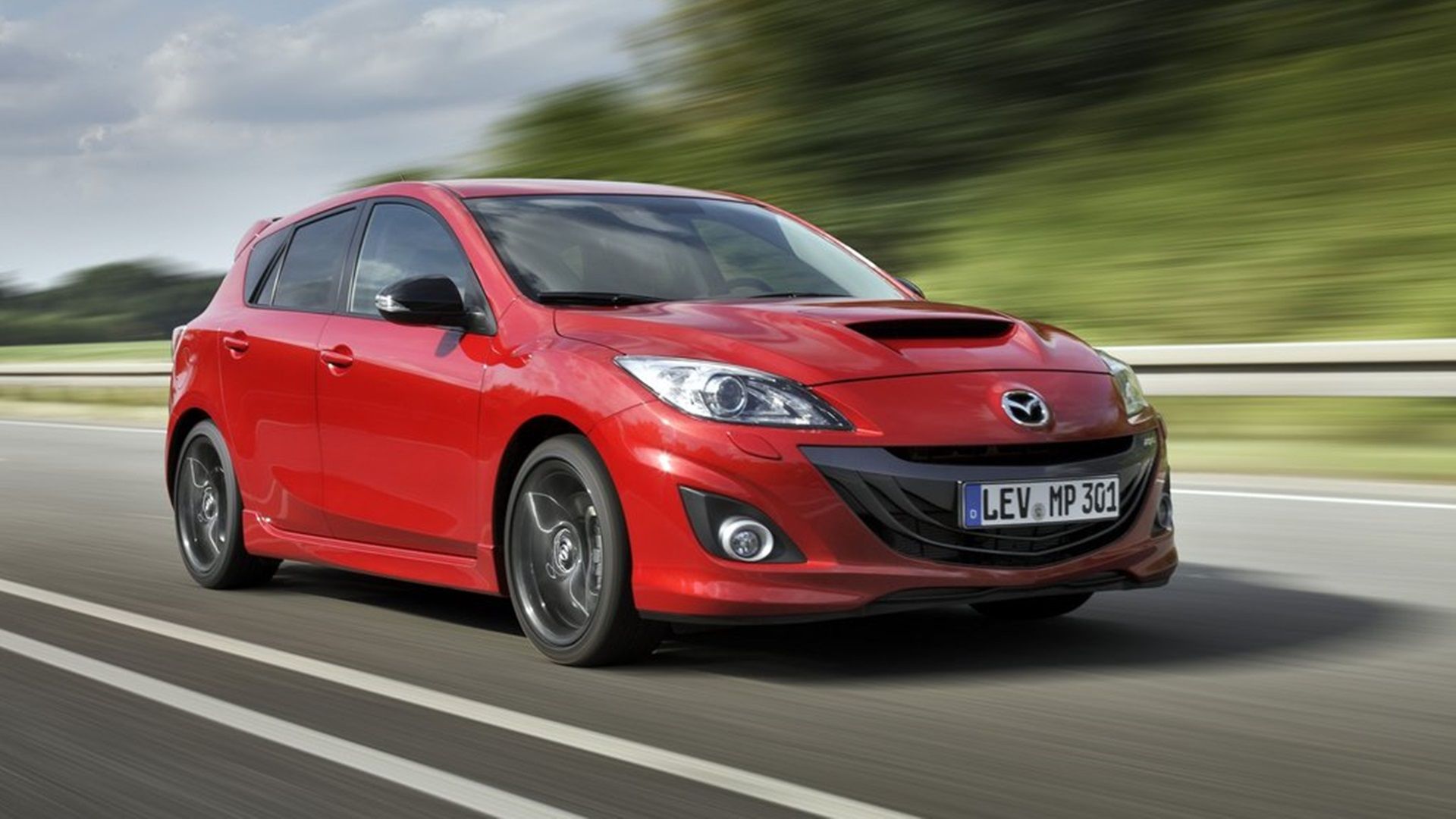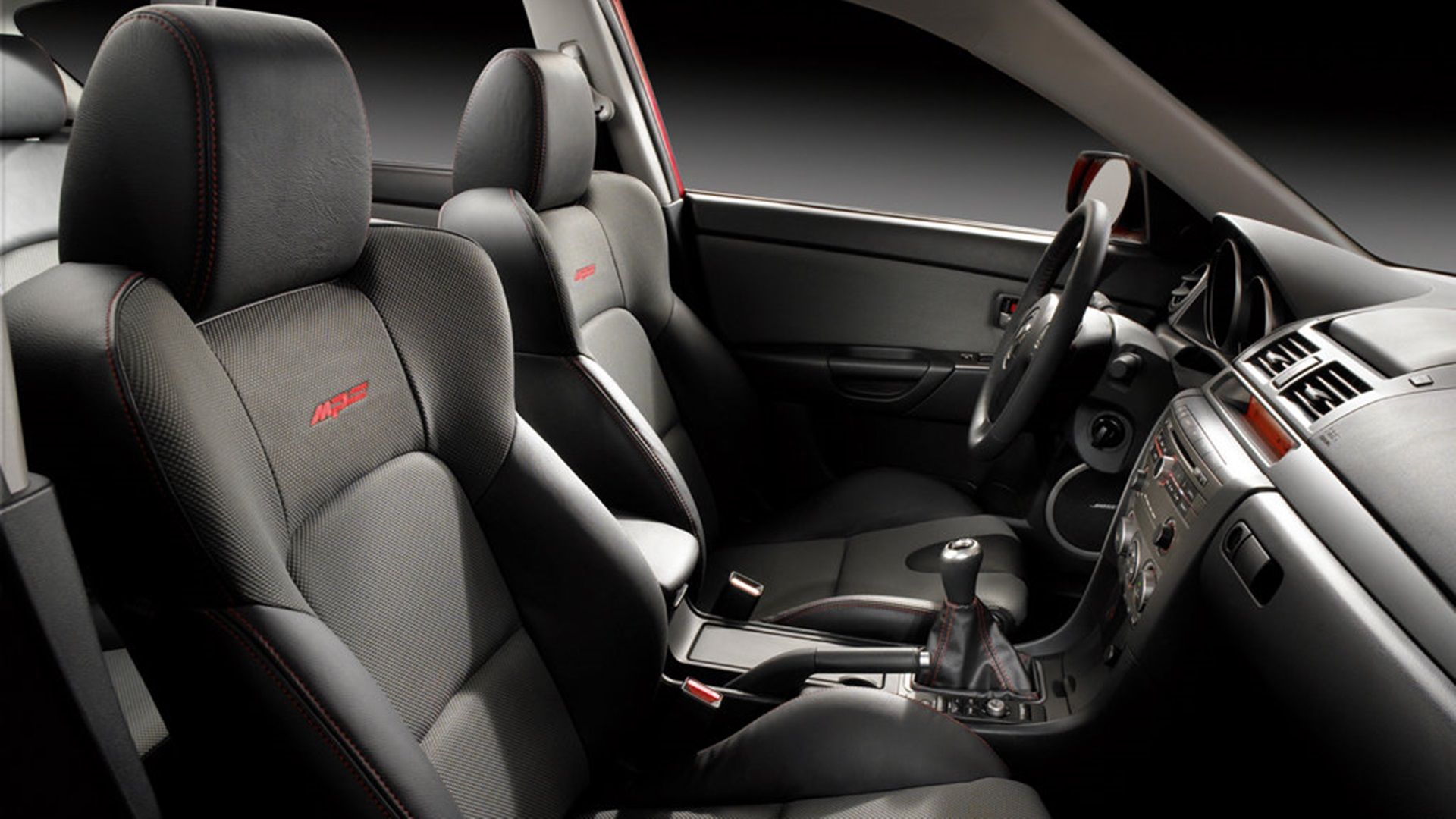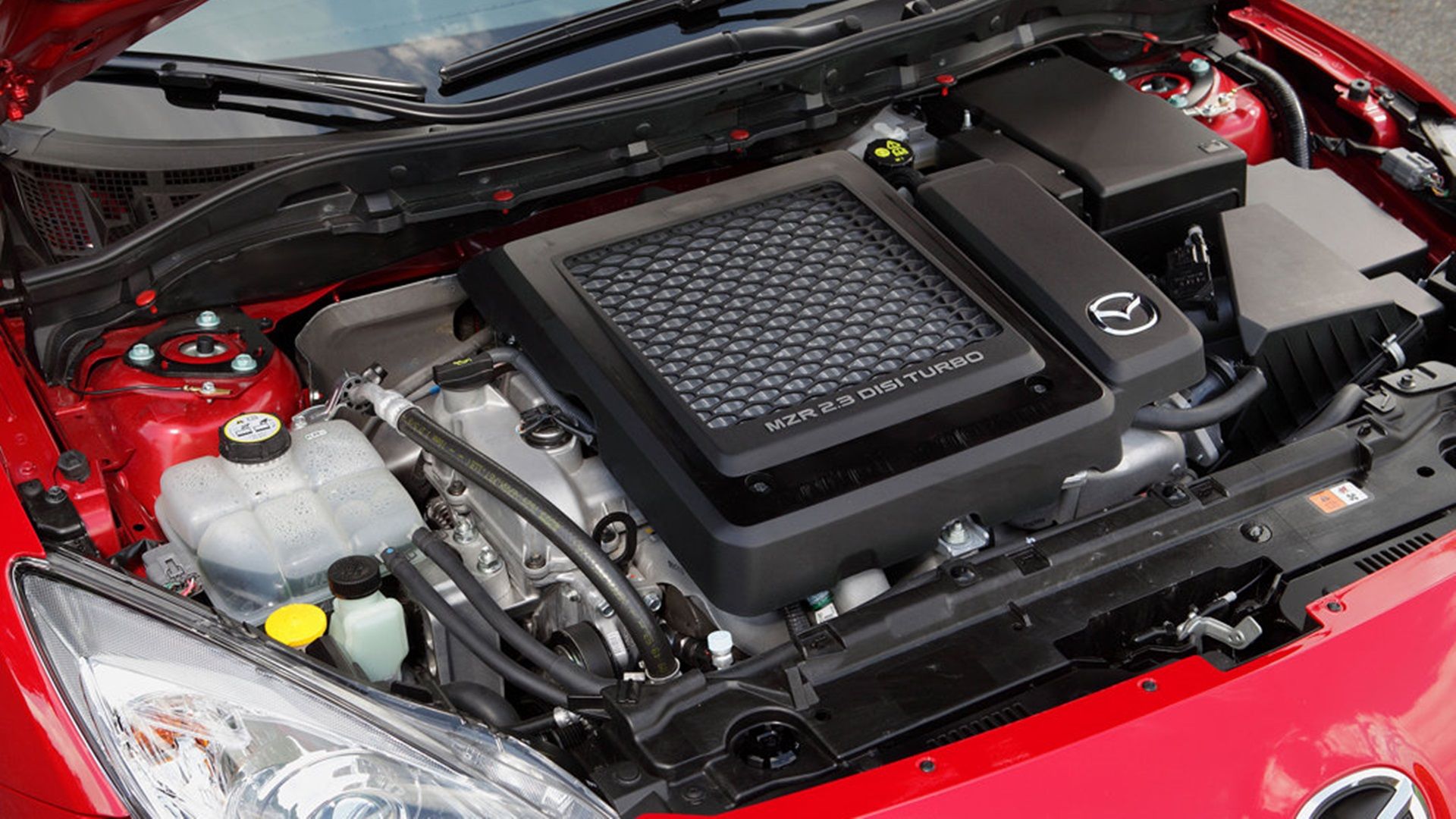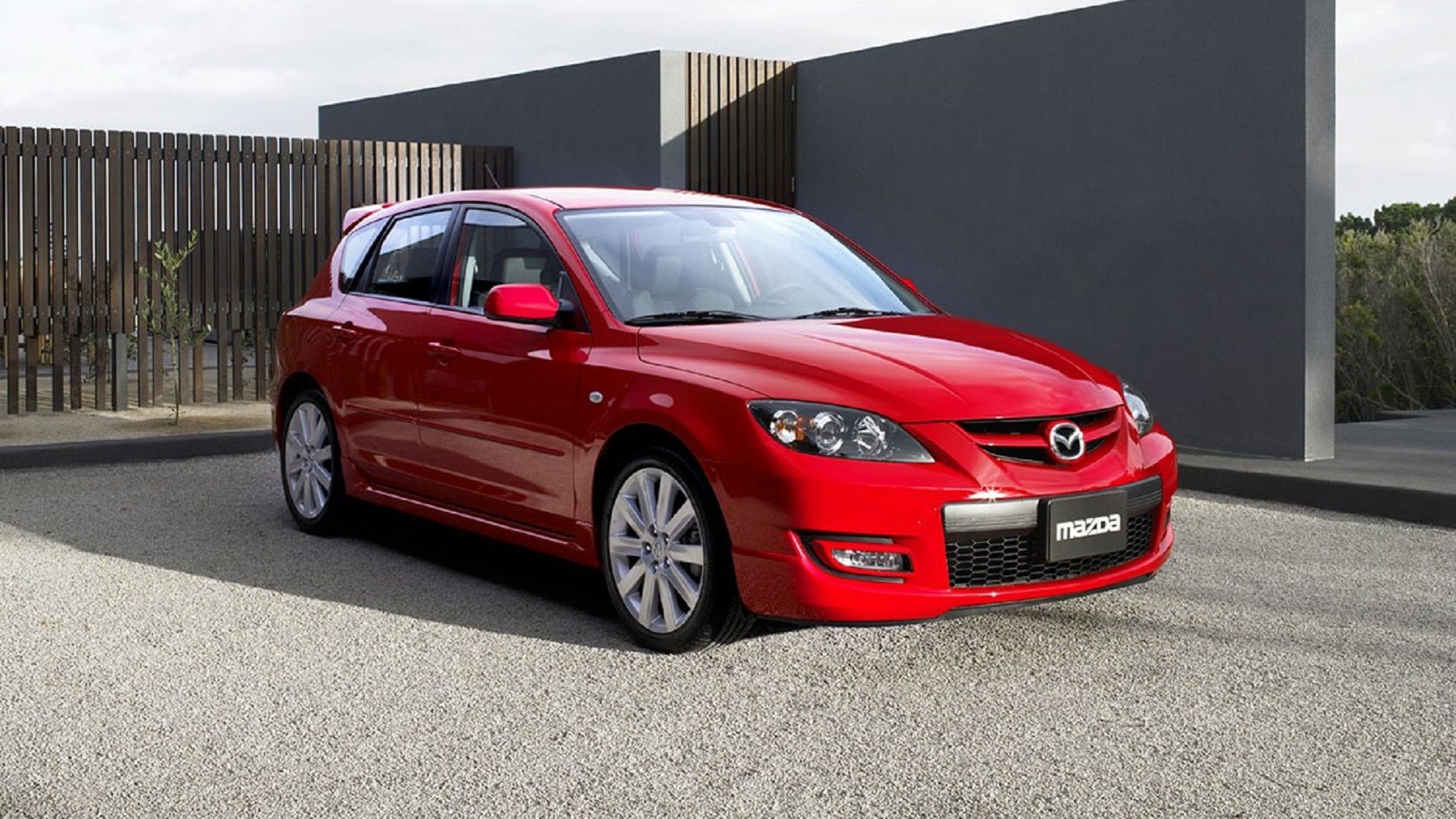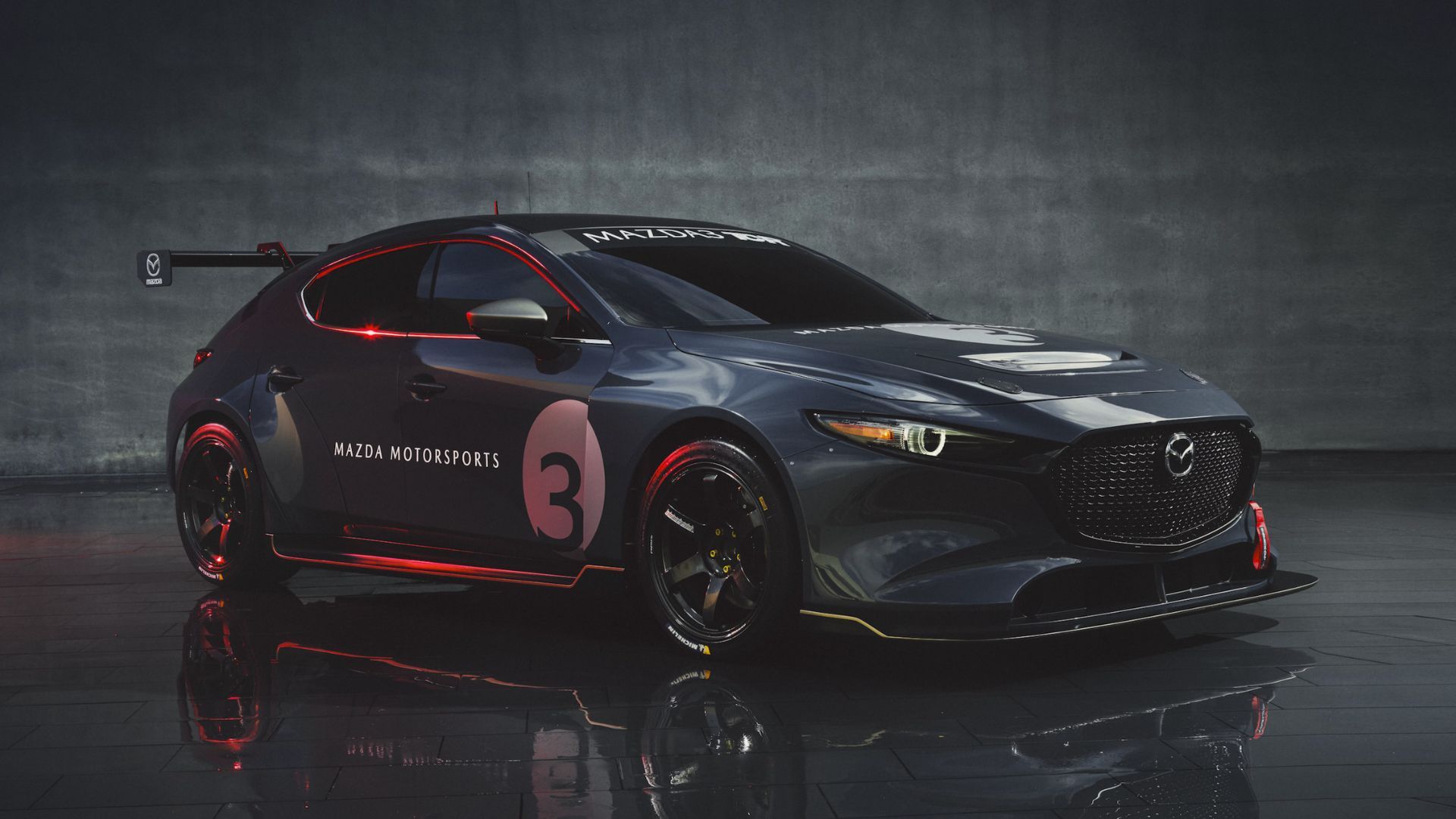Summary
- Mazda's rich legacy is not just limited to the Miata, the Mazdaspeed series, particularly the 2009 Mazdaspeed 3, showcases Mazda's spirit of innovation with its turbocharged inline-four engine and subtle yet refined exterior design.
- The Mazdaspeed 3's interior combines sportiness and sophistication, with features like sport seats, red accents, and enhanced trim options. Its turbocharged engine, paired with a six-speed manual transmission, delivered impressive power and performance in the hot hatch segment.
For many, the name Mazda immediately conjures visions of the iconic Miata. But scratch beneath the surface, and you'll discover a rich legacy punctuated by masterpieces. Many attribute Mazda's claim to fame to their groundbreaking rotary engines, which powered icons like the RX-7, especially in the vibrant 90s. It was in 1991 that Mazda etched an indelible mark in history by becoming the first Japanese car manufacturer to triumph at the 24 Hours of Le Mans, showcasing the prowess of their rotary engine.
While the rotary chapter has closed, another intriguing facet emerged in the 2000s - the Mazdaspeed series, a hidden gem in the automaker's lineup in the 2000s. Among them, the 2009 Mazdaspeed 3 is a testament to Mazda's spirit of innovation, boasting a turbocharged inline-four engine that rivals current generation counterparts. It's time to spotlight Mazda's forgotten masterpiece. Let's delve into the intricate facets that make this vehicle a true icon of its time.
A Silent Revolution: The Inception Of The Mazdaspeed 3
In 2003, Mazda introduced the inaugural Mazda 3, a precursor to what would eventually be heralded as an underappreciated marvel amongst hot hatches. When the Mazdaspeed version was unveiled in 2007, it subtly challenged titans like the Volkswagen Golf GTI and Ford Focus ST, offering a tantalizing glimpse into the promising future of the segment.
Contrary to its contemporaries at the time, the Mazdaspeed 3 whispered its sporting capabilities rather than shouting about it. The car's exterior metamorphosis was marked by subtlety, epitomizing understated elegance. Minor alterations to the front and rear bumpers and the addition of sophisticated 10-spoke 18-inch wheels portrayed a more refined, automobile than an outright sports car.
This discerning design choice highlighted Mazda's focus on the essence rather than the extravagance, encapsulating the true spirit of a sports car without succumbing to an overt display of aggression.
The Evolution: Second-Generation Mazdaspeed 3
In 2010 came the second-generation Mazdaspeed 3, building upon the nuanced legacy of its predecessor while accentuating its sporty DNA in more pronounced ways. Minor modifications to the front bumper were now complemented by a functional hood scoop, alleviating the previous model's overheating issues and infusing a touch of sporty aesthetics into the vehicle.
However, the period also saw Mazda adopting a uniform "smiley face" front fascia across its lineup, a decision that was met with divergent opinions. While some critiqued it, others appreciated its distinctive stance on the model's evolution, marking a brave and remarkable leap in its evolutionary journey.
A Peek Inside: Sportiness Meets Sophistication
Upon entering the cabin of the Mazdaspeed 3, one is greeted by a cockpit that is a harmonious blend of sportiness and sophistication. The first generation presented an enticing interior sprinkled with vibrant red accents that contrasted delightfully against the standard backdrop. Here, let's delve into the intricacies that made the interior of the Mazdaspeed 3 a sanctum of luxury and athleticism:
First Generation Focus
- Sport seats: Newly introduced sport seats offered elevated comfort and aesthetic appeal.
- Red stitching: The infusion of red stitching throughout the interior added a touch of vibrancy and elegance.
Second Generation Advancements
- Red gradient inserts: A more liberal usage of red gradients and accents adorned the front and rear seats, encapsulating the vehicle's sporty essence.
- Enhanced trim options: The addition of Sport and GT trims allowed for a level of customization that catered to a broad spectrum of preferences, incorporating features such as aluminum pedals and rain-sensing wipers, enhancing both convenience and functionality.
Through these thoughtful enhancements, Mazda crafted an environment that resonated with the sporty aspirations the vehicle aimed to embody, creating an ambiance of flair and performance.
Under The Hood: A Symphony of Power And Precision
Lurking beneath the restrained exterior lay the pulsating heart of the Mazdaspeed 3—a turbocharged 2.3-liter inline-four engine that belted out 263 horsepower and 280 pound-feet of torque. Paired exclusively with a six-speed manual transmission, this powerhouse translated the raw energy to the front wheels, albeit with a noticeable but manageable torque steer. While those numbers may not seem that impressive today, they were pretty healthy figures for the 2000s, especially when compared to the competition back in the day. 60 mph came up in 5.8 seconds and top speed was limited to155 mph.
Specifications
Engine | Turbo Inline-four |
Displacement | 2.3 liters |
Power | 263 horsepower |
Torque | 280 pound-feet |
Transmission | Six-speed manual |
Drivetrain | Front-wheel drive |
0-60 MPH | 5.8 seconds |
Top Speed | 155 MPH (limited) |
Fuel Economy (MPG) | 18/25 City/Highway |
At its peak, the Mazdaspeed 3 was a formidable force in the hot hatch segment. It outperformed established players like the Golf GTI and Focus ST with its superior power and torque dynamics. Even the formidable Golf R32 was overshadowed by Mazda's raw performance capabilities.
While retaining the powerhouse engine, the second generation brought subtle yet significant enhancements to the drivetrain and ECU mapping, promising a refined driving experience with quicker acceleration times.
Time For A Revival Of MazdaSpeed?
As we navigate through a period witnessing a resurgence of the hot hatch genre with offerings from industry giants like Honda, Volkswagen, and Toyota, the void left by the discontinuation of the Mazdaspeed 3 in 2013 becomes more apparent.
Although Mazda currently offers a turbo variant of the Mazda 3, it somehow lacks the unique charisma that the Mazdaspeed version exuded. It begs the question—Is it time for a revival? Considering the current landscape and the boundless potential of the Turbo 3 platform, here are some avenues Mazda could explore:
- Third-generation concept: A modern-day iteration that blends nostalgia with avant-garde technology, promising a union of the old and new.
- Speed variant of Mazda 3 hatchback: Crafting a Speed version of the current Mazda 3 hatchback that takes cues from its legendary predecessor while aligning with modern demands.
- Leveraging Turbo 3 platform: Utilizing the existing Turbo 3 platform to resurrect the Speed brand, offering a product that stands tall amidst contemporary competition yet carries the legacy of its lineage.
Through these pathways, Mazda has the opportunity to reignite the flame and reintroduce the Speed nameplate that pays homage to its roots and possibly once again set a new standard in the hot hatch segment.
A Legacy Awaiting Rebirth
As we reminisce, the Mazdaspeed 3 emerges as a testament to Mazda's expertise in creating vehicles that seamlessly meld practicality with exhilarating performance. Its understated approach to sportiness and a heart epitomizing power and precision established it as a force to reckon with in the hot hatch arena.
Now, as we witness a renewed interest in the hot hatch category, the Mazdaspeed 3 serves as a beacon of a masterpiece that was perhaps slightly ahead of its time. For enthusiasts, the hope remains that Mazda might revisit this legend, leveraging the rich potential of the Turbo 3 platform to craft a hot hatch that resonates with both nostalgia and modern demands, possibly creating a vehicle that not only celebrates its illustrious past but heralds a bright and promising future.
The ball is now in Mazda's court to heed this call or let the legend remain a revered chapter in the automotive annals. Regardless of the path chosen, the Mazdaspeed 3 has carved an indelible mark in automotive history, embodying a creation that transcended norms, a creation that beckons not just to be remembered but to be celebrated and, perhaps, to witness a rebirth that would once again stir the automotive landscape.

